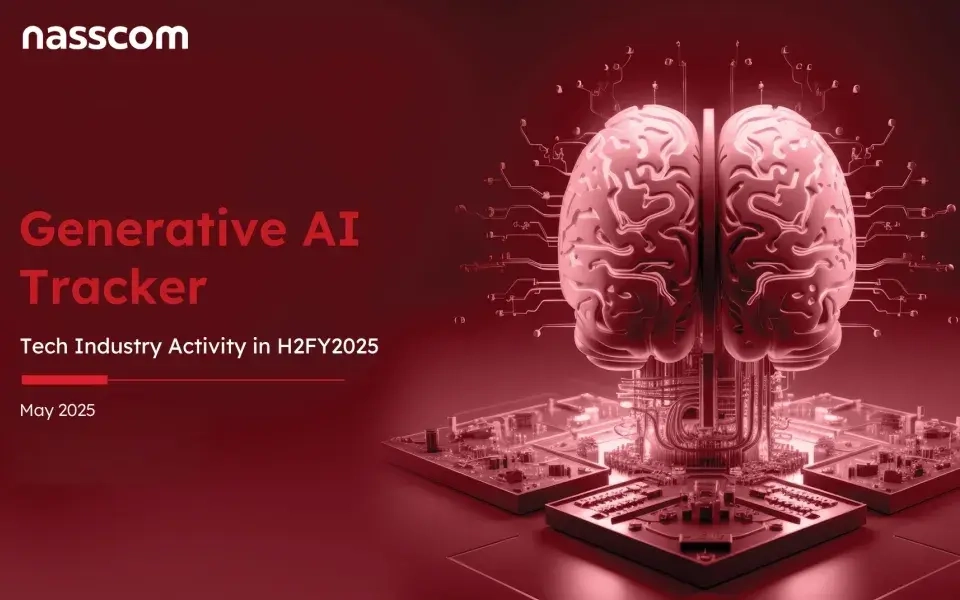Customer service is the backbone of any successful organization. In a digital-first era where customers expect fast, seamless, and personalized interactions, Contact Center as a Service (CCaaS) platforms have emerged as game-changers. These cloud-based solutions provide tools to enhance customer experience (CX), improve agent productivity, and streamline operations.
Forrester’s report, The Contact-Center-As-A-Service Platforms Landscape, Q4 2024, highlights how CCaaS solutions are evolving to meet modern business challenges. From the integration of low-code/no-code (LCNC) tools to the adoption of generative AI (genAI), CCaaS platforms are at the forefront of innovation, enabling businesses to transform their contact centers into strategic assets.
This blog delves into the significance, benefits, and emerging trends of CCaaS, offering actionable insights for businesses looking to revolutionize their customer service operations.
Understanding CCaaS Platforms
CCaaS platforms are SaaS-based solutions that enable businesses to manage omnichannel customer interactions across voice, chat, email, and social media channels. They provide tools for intelligent routing, self-service capabilities, and agent assistance, ensuring a balance between operational efficiency and excellent CX.
According to Forrester, CCaaS is defined as a cloud-based application that allows brands to manage customer interactions while maximizing agent efficiency. It integrates seamlessly with CRM and backend systems to provide personalized experiences and simplify workflows.
Key Benefits of CCaaS Platforms
1. Enhancing Customer Experience (CX)
Modern customers demand quick and accurate solutions to their problems, often preferring self-service options. CCaaS platforms address this need with features like:
- Omnichannel Communication: Customers can choose their preferred channel, ensuring a consistent experience across platforms.
- AI-Powered Self-Service: Chatbots and virtual assistants handle routine queries, escalating complex issues to human agents when necessary.
- Intelligent Routing: Advanced routing algorithms connect customers to the best-suited agent, minimizing wait times and improving satisfaction.
The result is a seamless, personalized customer journey that fosters loyalty and trust.
2. Boosting Agent Productivity
Agent performance is critical to the success of any contact center. CCaaS platforms provide tools to empower agents, including:
- Unified Dashboards: Agents access all necessary information, including customer history and real-time insights, from a single interface.
- AI-Driven Assistance: Real-time suggestions and autogenerated summaries reduce the cognitive load on agents, enabling faster resolutions.
- Workforce Optimization Tools: Scheduling, quality management, and feedback systems ensure agents remain motivated and productive.
These features not only improve efficiency but also enhance job satisfaction, reducing turnover rates in the contact center industry.
3. Driving Cost Efficiency
Contact centers are traditionally seen as cost centers. CCaaS platforms flip this narrative by introducing automation and optimization tools that reduce operational expenses.
- Self-Service Solutions: Automated responses to common queries lower the burden on human agents.
- Streamlined Workflows: Smart routing and AI assistance minimize average handle times, saving costs without compromising CX.
- Scalability: Being cloud-based, CCaaS platforms allow businesses to scale operations without significant infrastructure investments.
Key Trends Shaping CCaaS
1. The Emergence of LCNC Tools
One of the most transformative trends in CCaaS is the integration of low-code/no-code (LCNC) capabilities. These tools enable organizations to customize workflows, create automation, and develop chatbots without requiring deep technical expertise.
Benefits of LCNC in CCaaS:
- Empowering Business Users: Non-technical staff can create and modify workflows, reducing dependency on IT teams.
- Faster Innovation: Businesses can quickly adapt to market changes by implementing new features or processes.
- Cost Savings: By eliminating the need for extensive development resources, LCNC tools make innovation more accessible and affordable.
For example, a customer service team can use LCNC to design a chatbot that resolves FAQs, escalating only complex issues to agents. This improves response times and reduces operational costs.
2. Remote Work Enablement
The shift to remote work, accelerated by the COVID-19 pandemic, has reshaped the way contact centers operate. CCaaS platforms have played a pivotal role in enabling distributed workforces.
How CCaaS Supports Remote Work:
- Cloud Accessibility: Agents can securely access the platform from any location, ensuring business continuity.
- Real-Time Collaboration: Features like team chats, video calls, and shared dashboards foster collaboration among remote teams.
- Performance Monitoring: Supervisors can track agent performance and provide feedback through built-in quality management tools.
Remote work has become a permanent fixture in many organizations, and CCaaS platforms ensure that distributed teams remain productive and engaged.
3. Generative AI: The Game-Changer
Generative AI (genAI) is revolutionizing the CCaaS landscape by introducing capabilities that were once considered futuristic.
Applications of genAI in CCaaS:
- Call Summarization: Automating post-call summaries saves time and improves record accuracy.
- Advanced Self-Service: GenAI enhances chatbots to provide dynamic, context-aware responses.
- Predictive Analytics: Analyzing customer data to predict behavior and personalize interactions.
- Agent Assistance: Real-time suggestions based on customer queries help agents provide faster resolutions.
The adoption of genAI is still in its early stages, but its potential to improve efficiency and CX is immense.
Challenges in CCaaS Adoption
While CCaaS platforms offer numerous benefits, their adoption is not without challenges:
1. Migration Complexity
Moving from legacy systems to CCaaS is a complex and time-consuming process. Businesses must plan carefully to avoid disruptions during the transition.
2. Balancing CX and Cost Savings
In economically challenging times, organizations often prioritize cost reduction over CX. However, poor customer experiences can result in lost revenue and customer churn, offsetting short-term savings.
3. Vendor Selection
With a plethora of vendors offering diverse capabilities, choosing the right CCaaS partner can be daunting. Businesses must assess their specific needs and evaluate vendors based on functionality, scalability, and customer support.
Core and Extended Use Cases of CCaaS
Core Use Cases:
- Omnichannel Inbound Customer Service: Providing consistent experiences across multiple channels.
- Customer Self-Service: Empowering customers to resolve routine queries independently.
Extended Use Cases:
- Workforce Optimization: Enhancing agent scheduling, training, and feedback processes.
- Advanced Business Insights: Leveraging analytics to gain actionable insights into customer behavior.
- Outbound Customer Interactions: Supporting proactive outreach for sales and customer retention.
By addressing both core and extended use cases, CCaaS platforms cater to a wide range of business needs.
Future of CCaaS: The Role of Hyperscalers
The CCaaS market is being reshaped by hyperscalers such as AWS, Google, and Microsoft. These tech giants bring their vast resources and AI capabilities to the table, offering CCaaS solutions that integrate seamlessly with their cloud infrastructure.
Implications for Businesses:
- Reliability: Hyperscalers provide robust infrastructure that ensures uptime and performance.
- Scalability: Businesses can easily scale their operations to meet fluctuating demand.
- AI Integration: Advanced AI tools from hyperscalers enhance the functionality of CCaaS platforms.
As hyperscalers continue to expand their presence, businesses must evaluate how their offerings align with organizational goals.
Realizing the Potential of CCaaS
To unlock the full potential of CCaaS, organizations must approach adoption strategically:
- Define Objectives: Clearly outline the goals you want to achieve, such as improving CX, reducing costs, or enhancing agent productivity.
- Evaluate Vendors: Assess vendors based on their core and extended use cases, as well as their ability to meet specific business needs.
- Leverage LCNC and AI: Use LCNC tools to innovate quickly and adopt AI solutions to drive efficiency.
- Prioritize Training: Ensure agents and supervisors are well-trained on the platform’s features to maximize its benefits
Industry-Specific Applications of CCaaS
CCaaS platforms are highly versatile and can be tailored to meet the unique needs of various industries. Here’s how some sectors are leveraging CCaaS to transform their customer experience:
- E-commerce and Retail:
- In the fast-paced world of online shopping, customer service is critical. CCaaS platforms help e-commerce businesses manage:
- Seasonal Surges: High call volumes during sales events or holidays can be routed intelligently to available agents or handled via AI-powered bots.
- Returns and Refunds: Chatbots guide customers through the return process, reducing friction and saving time for agents.
- Healthcare:
- Healthcare providers use CCaaS for secure and efficient communication, focusing on patient care while ensuring compliance with regulations like HIPAA. Key use cases include:
- Appointment Scheduling: Automated systems allow patients to book or reschedule appointments easily.
- Patient Follow-Ups: Proactive reminders and updates are sent via SMS or email, reducing no-shows.
- Banking and Finance:
- Financial institutions rely on CCaaS for robust and secure customer interactions. Examples include:
- Fraud Prevention: Real-time alerts and interactive systems enable quick action against suspicious transactions.
- Personalized Financial Guidance: Integration with CRMs allows agents to provide tailored solutions based on a customer’s financial history.
- Travel and Hospitality:
- This industry thrives on customer satisfaction, and CCaaS platforms enable:
- Real-Time Support: Helping travelers with booking changes, cancellations, or special requests.
- Feedback Collection: Automating surveys post-service to improve future offerings.
Security and Compliance in CCaaS
As contact centers handle sensitive customer data, security and compliance are non-negotiable. Here’s how CCaaS platforms address these concerns:
- Data Encryption:
- All communications, whether voice or text, are encrypted to prevent unauthorized access.
- Compliance Standards:
- CCaaS platforms are designed to adhere to industry-specific regulations, such as:
- GDPR (General Data Protection Regulation) for European markets.
- CCPA (California Consumer Privacy Act) for data privacy in the US.
- HIPAA (Health Insurance Portability and Accountability Act) for healthcare.
- Role-Based Access Controls:
- Agents only access the data they need, reducing the risk of breaches.
By prioritizing security, CCaaS platforms not only protect businesses but also build customer trust.
Environmental Impact of CCaaS
Beyond operational benefits, CCaaS platforms contribute positively to environmental sustainability:
- Reduced Energy Consumption:
- With minimal on-premise hardware, CCaaS reduces energy usage and cooling requirements.
- Lower Carbon Footprint:
- By supporting remote work, CCaaS minimizes the need for commuting, decreasing greenhouse gas emissions.
- Cloud Resource Optimization:
- Cloud providers hosting CCaaS solutions utilize energy-efficient practices, such as renewable energy and optimized server loads.
Organizations adopting CCaaS not only improve their operations but also align with global sustainability goals.
The Future of CCaaS
The CCaaS landscape is evolving rapidly, with emerging technologies shaping its future. Here’s what’s next:
- Integration with Voice Assistants:
- Platforms may soon leverage tools like Alexa and Google Assistant to provide hands-free customer support, enhancing accessibility.
- Predictive AI for Proactive Engagement:
- AI-powered analytics will predict customer needs, allowing businesses to reach out proactively with solutions.
- Metaverse Interactions:
- As the metaverse grows, CCaaS could enable customer service within virtual environments, redefining customer engagement.
The future of CCaaS promises even greater efficiency and personalization, making it a critical investment for forward-thinking businesses.
Metrics to Measure Success with CCaaS
Measuring the ROI of a CCaaS implementation is crucial for evaluating its impact. Businesses should focus on these metrics:
- Customer Satisfaction (CSAT):
- Use post-interaction surveys to assess customer happiness.
- First Call Resolution (FCR):
- Track how often issues are resolved during the first interaction.
- Average Handle Time (AHT):
- Monitor how long it takes to resolve customer issues, aiming for a balance between speed and thoroughness.
- Net Promoter Score (NPS):
- Measure customer loyalty by gauging how likely they are to recommend your brand.
By analyzing these metrics, businesses can continually optimize their contact center strategies.
Metrics to Measure Success with CCaaS
Cost:
Contact-Center-as-a-Service (CCaaS) platforms operate on a subscription-based pricing model, providing predictable operational expenses. In contrast, on-premise contact centers require a significant upfront investment in hardware, software, and infrastructure, which can be a substantial barrier for smaller organizations.
Scalability:
CCaaS solutions are highly scalable, making it easy to adapt to fluctuating demands, such as during peak seasons, or to support remote agents seamlessly. On-premise systems, however, are constrained by their physical infrastructure, making scaling a more complex and costly endeavor.
Maintenance:
With CCaaS, the vendor handles maintenance, updates, and security, reducing the burden on the organization’s IT team. On-premise systems, however, require dedicated IT resources to manage maintenance, troubleshoot issues, and implement security measures.
Upgrades:
CCaaS platforms offer frequent, automatic upgrades with minimal disruption to operations, ensuring that organizations always have access to the latest features. On-premise systems, in contrast, involve manual upgrades that are often time-consuming, require careful planning, and may lead to operational downtime.
Conclusion
The evolution of CCaaS platforms is transforming contact centers from cost centers into strategic assets that drive business growth. By integrating LCNC tools, enabling remote work, and leveraging genAI, CCaaS platforms empower organizations to deliver exceptional customer experiences while optimizing operations.
As businesses navigate a challenging economic landscape, investing in the right CCaaS platform can provide a competitive edge. Whether you’re looking to enhance CX, improve agent productivity, or reduce costs, CCaaS offers the tools and capabilities to achieve your goals.

























![[Part 2] The Geopolitical Chessboard: Navigating the US-China AI Rivalry and Strategic Imperatives for Indian Tech Startups](https://community.nasscom.in/sites/default/files/styles/560_x_350/public/media/images/ChatGPT%20Image%20Jul%203%2C%202025%2C%2005_43_59%20PM-edited.png.webp?itok=95KRqnmN)







